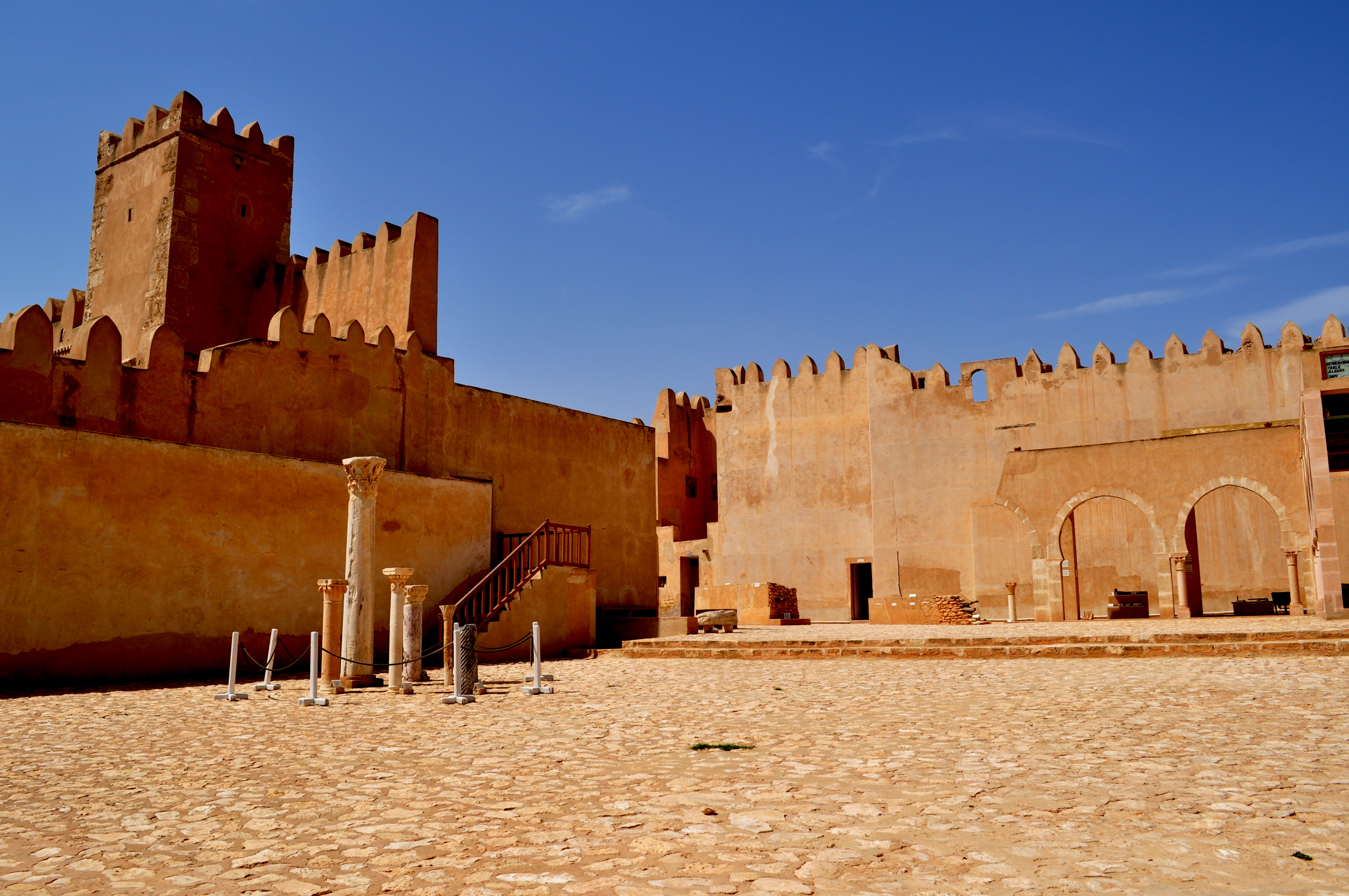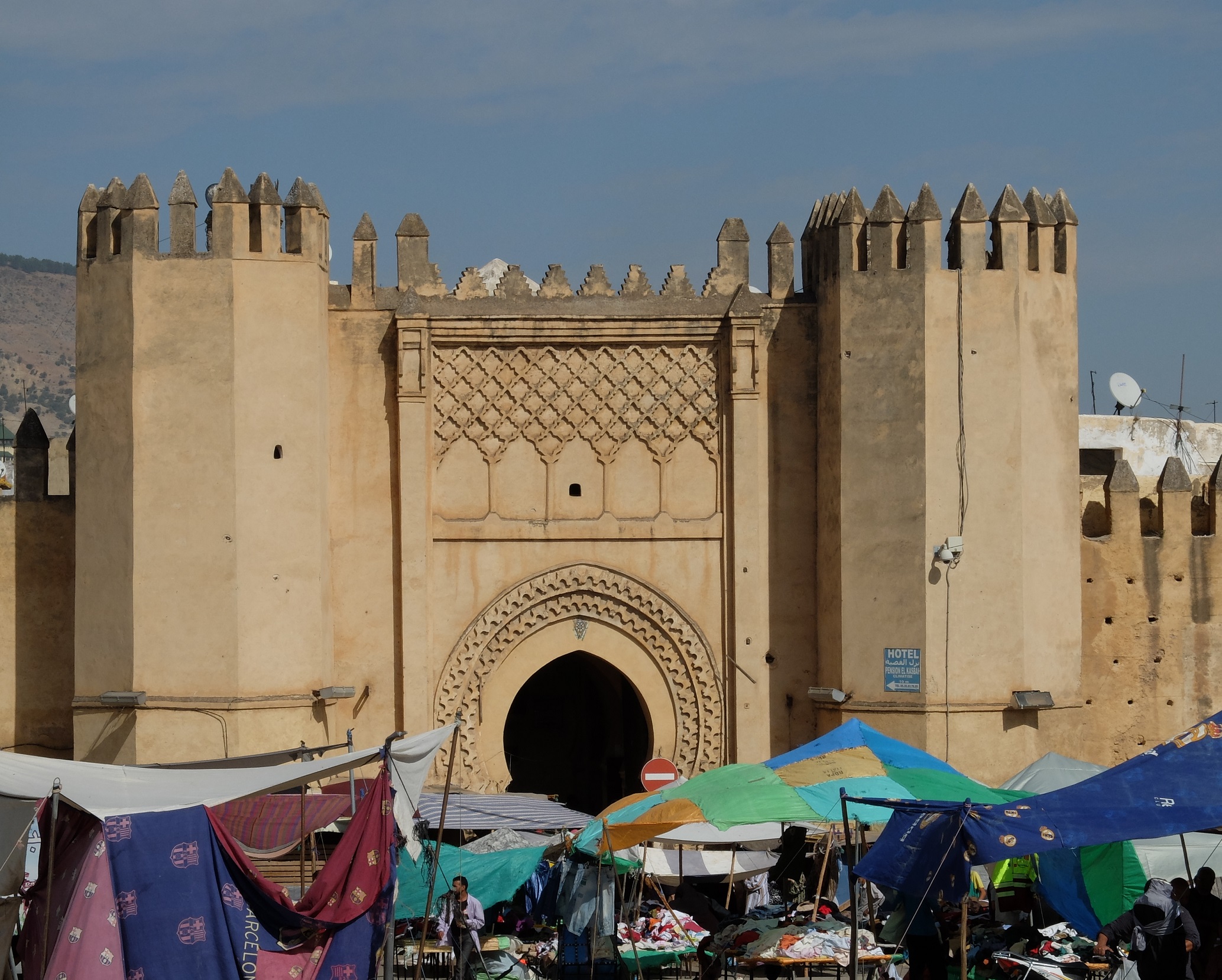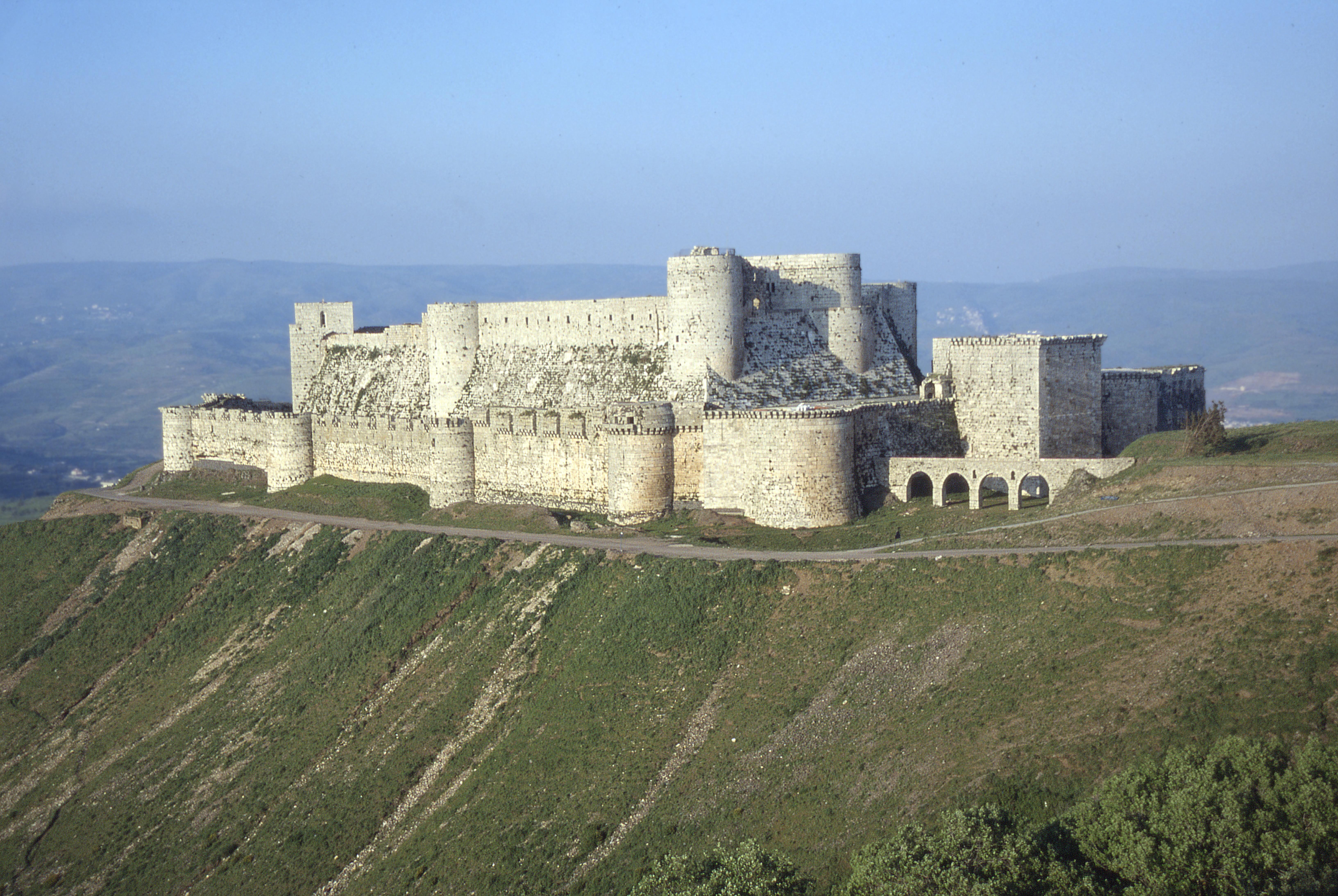|
Kasbah
A kasbah (, also ; ar, قَـصَـبَـة, qaṣaba, lit=fortress, , Maghrebi Arabic: ), also spelled qasba, qasaba, or casbah, is a fortress, most commonly the citadel or fortified quarter of a city. It is also equivalent to the term ''alcazaba'' in Spanish (), which derives from the same Arabic word. By extension, the term can also refer to a medina quarter, particularly in Algeria. In various languages, the Arabic word, or local words borrowed from the Arabic word, can also refer to a settlement, a fort, a watchtower, or a blockhouse. Citadel or fortress The term ''qasaba'' was historically flexible but it essentially denotes a fortress, commonly a citadel that protects a city or settlement area, or that serves as the administrative center. A kasbah citadel typically housed the military garrison and other privileged buildings such as a palace, along with other amenities such as a mosque and a hammam (bathhouse). Some kasbahs are built in a strategic elevated position ... [...More Info...] [...Related Items...] OR: [Wikipedia] [Google] [Baidu] |
Kasbah Of Marrakesh
The Kasbah of Marrakesh is a large walled district in the southern part of the medina of Marrakesh, Morocco, which historically served as the citadel ('' kasbah'') and royal palace complex of the city. A large part of the district is still occupied by the official royal palace, the Dar al-Makhzen, which serves as the residence of the King of Morocco when he visits the city. The rest of the district consists of various neighbourhoods and monuments. It was founded by the Almohads in the late 12th century, with most of the construction carried out by Caliph Ya'qub al-Mansur (r. 1184–1199). Two of its most important surviving structures today, the Kasbah Mosque and the main gate of Bab Agnaou, date from al-Mansur's reign. The palace complex was neglected after the fall of the Almohads, but the Kasbah was restored and rebuilt by the Saadian dynasty in the 16th century, during the time of sultans Abdallah al-Ghalib and Ahmad al-Mansur, who created new palaces and extensive garde ... [...More Info...] [...Related Items...] OR: [Wikipedia] [Google] [Baidu] |
Kasbah Of The Udayas
The Kasbah of the Udayas (; Berber: ⵇⵙⴱⴰ ⵏ ⵉⵡⴷⴰⵢⵏ ''Qasbat ‘n Iwdayn''), also spelled Kasbah of the Oudaias or of the Oudayas, is a kasbah (citadel) in Rabat, Morocco. It is located on a hill at the mouth of the Bou Regreg river, opposite Salé, and adjacent to the old medina of Rabat. It is listed, along with other sites in Rabat, as a UNESCO World Heritage Site. Name The original name of the kasbah was ''Qasbat al-Awdāya'' (). ''Awdāya'' is the plural of the word ''wadi'', meaning "river valley." The use of ''al-Widaya'' () instead of ''al''-''Awdāya'' has become popular in Morocco. History In the 10th century the Umayyads of Cordoba, or their Zenata Berber allies in the region, founded a ribat or fortified monastery/outpost in this area, to defend against the Barghawata Berbers who had established a Kharijite state to the south. This ribat was most likely on the same site as the current Kasbah of the Udayas, but its location has not been confirme ... [...More Info...] [...Related Items...] OR: [Wikipedia] [Google] [Baidu] |
Kasbah An-Nouar
The Kasbah An-Nouar or Kasbah Filali is a walled district and former military enclosure in the old medina of Fez, Morocco. Its name means "citadel of the flowers", but it is sometimes also referred to as Kasbah Filala and Kasbah Chorfa. It is one of several fortified military enclosures or kasbahs that were built around the old city of Fez across different periods. History The foundation of the kasbah reportedly dates to the Almohad period when Muhmmad al-Nasir (12th century) rebuilt the fortifications of Fez. It is likely that it took its present form, however, during the Alaouite period, when it acquired its association with the Filala (settlers from the Tafilalt region). Medieval period (12th century to 16th century) The Almohads under Abd al-Mu'min conquered Fez in 1145 after a difficult siege in which the inhabitants had put up fierce resistance. In retaliation for this opposition and to prevent future resistance, Abd al-Mu'min ordered all the walls and fortification ... [...More Info...] [...Related Items...] OR: [Wikipedia] [Google] [Baidu] |
Rabat
Rabat (, also , ; ar, الرِّبَاط, er-Ribât; ber, ⵕⵕⴱⴰⵟ, ṛṛbaṭ) is the capital city of Morocco and the country's seventh largest city with an urban population of approximately 580,000 (2014) and a metropolitan population of over 1.2 million. It is also the capital city of the Rabat-Salé-Kénitra administrative region. Rabat is located on the Atlantic Ocean at the mouth of the river Bou Regreg, opposite Salé, the city's main commuter town. Rabat was founded in the 12th century by Almohads. The city steadily grew but went into an extended period of decline following the collapse of the Almohads. In the 17th century Rabat became a haven for Barbary pirates. The French established a protectorate over Morocco in 1912 and made Rabat its administrative center. Morocco achieved independence in 1955 and Rabat became its capital. Rabat, Temara, and Salé form a conurbation of over 1.8 million people. Silt-related problems have diminished Rabat's role a ... [...More Info...] [...Related Items...] OR: [Wikipedia] [Google] [Baidu] |
Kasbah Of Sfax
Kasbah of Sfax is a kasbah, an Islamic desert fortress, located in the southwestern corner of the ancient city of Sfax. It was used for a different purposes throughout the history, first a control tower built by the Aghlabids on the coast, then the seat of the municipal government, and then the main army barracks. Its construction was preceded by the deployment of the wall and the medina quarter. Today it serves as a museum of traditional architecture. History Establishment The kasbah was established as a part of a coastal surveillance and security campaign carried out by the Aghlabid state's main troops, which gained independence and proceeded to conquer Ifriqiya in the early 9th century. They were in control of a series of 10 observation towers along the coast of Sfax. Among these newly constructed towers was the kasbah, built as the watchtower of Sfax, on top of an ancient palace in the south of Mahares they inherited from previous civilizations that ruled the region. The ... [...More Info...] [...Related Items...] OR: [Wikipedia] [Google] [Baidu] |
Fez, Morocco
Fez or Fes (; ar, فاس, fās; zgh, ⴼⵉⵣⴰⵣ, fizaz; french: Fès) is a city in northern inland Morocco and the capital of the Fès-Meknès administrative region. It is the second largest city in Morocco, with a population of 1.11 million according to the 2014 census. Located to the north west of the Atlas Mountains, Fez is linked to several important cities of different regions; it is from Tangier to the northwest, from Casablanca, from Rabat to the west, and from Marrakesh to the southwest. It is surrounded by hills and the old city is centered around the Fez River (''Oued Fes'') flowing from west to east. Fez was founded under Idrisid rule during the 8th-9th centuries CE. It initially consisted of two autonomous and competing settlements. Successive waves of mainly Arab immigrants from Ifriqiya ( Tunisia) and al-Andalus ( Spain/ Portugal) in the early 9th century gave the nascent city its Arab character. After the downfall of the Idrisid dynasty, other e ... [...More Info...] [...Related Items...] OR: [Wikipedia] [Google] [Baidu] |
Kasbah Cherarda
Kasbah Cherarda () is a kasbah in the city of Fez, Morocco Fez or Fes (; ar, فاس, fās; zgh, ⴼⵉⵣⴰⵣ, fizaz; french: Fès) is a city in northern inland Morocco and the capital of the Fès-Meknès administrative region. It is the second largest city in Morocco, with a population of 1.11 m ..., located on the northern outskirts of Fes el-Jdid. It was initially referred to as Kasbah el-Khemis, the "Thursday Fort" ( ar, قصبة الخمس) as there was an open market held every Thursday outside the wall.Qasba Cherarda ''Archnet''. Retrieved January 11, 2018. The name ''cherarda'' (or ''sherarda'') originates from the name of an Arab tribe whose '' qaid'' had also previously built a kasbah here in order to protect the tribe's granaries. [...More Info...] [...Related Items...] OR: [Wikipedia] [Google] [Baidu] |
Tunis
''Tounsi'' french: Tunisois , population_note = , population_urban = , population_metro = 2658816 , population_density_km2 = , timezone1 = CET , utc_offset1 = +01:00 , timezone1_DST = , utc_offset1_DST = , postal_code_type = Postal code , postal_code = 1xxx, 2xxx , area_code_type = Calling code , area_code = 71 , iso_code = TN-11, TN-12, TN-13 and TN-14 , blank_name_sec2 = geoTLD , blank_info_sec2 = .tn , website = , footnotes = Tunis ( ar, تونس ') is the capital and largest city of Tunisia. The greater metropolitan area of Tunis, often referred to as " Grand Tunis", has about 2,700,000 inhabitants. , it is the third-largest city in the Maghre ... [...More Info...] [...Related Items...] OR: [Wikipedia] [Google] [Baidu] |
Almohad Caliphate
The Almohad Caliphate (; ar, خِلَافَةُ ٱلْمُوَحِّدِينَ or or from ar, ٱلْمُوَحِّدُونَ, translit=al-Muwaḥḥidūn, lit=those who profess the unity of God) was a North African Berber Muslim empire founded in the 12th century. At its height, it controlled much of the Iberian Peninsula (Al Andalus) and North Africa (the Maghreb). The Almohad movement was founded by Ibn Tumart among the Berber Masmuda tribes, but the Almohad caliphate and its ruling dynasty were founded after his death by Abd al-Mu'min al-Gumi. Around 1120, Ibn Tumart first established a Berber state in Tinmel in the Atlas Mountains. Under Abd al-Mu'min (r. 1130–1163) they succeeded in overthrowing the ruling Almoravid dynasty governing Morocco in 1147, when he conquered Marrakesh and declared himself caliph. They then extended their power over all of the Maghreb by 1159. Al-Andalus soon followed, and all of Muslim Iberia was under Almohad rule by 1172. The turning p ... [...More Info...] [...Related Items...] OR: [Wikipedia] [Google] [Baidu] |
Fortification
A fortification is a military construction or building designed for the defense of territories in warfare, and is also used to establish rule in a region during peacetime. The term is derived from Latin ''fortis'' ("strong") and ''facere'' ("to make"). From very early history to modern times, defensive walls have often been necessary for cities to survive in an ever-changing world of invasion and conquest. Some settlements in the Indus Valley civilization were the first small cities to be fortified. In ancient Greece, large stone walls had been built in Mycenaean Greece, such as the ancient site of Mycenae (famous for the huge stone blocks of its ' cyclopean' walls). A Greek '' phrourion'' was a fortified collection of buildings used as a military garrison, and is the equivalent of the Roman castellum or English fortress. These constructions mainly served the purpose of a watch tower, to guard certain roads, passes, and borders. Though smaller than a real fortress, th ... [...More Info...] [...Related Items...] OR: [Wikipedia] [Google] [Baidu] |
Krak Des Chevaliers
Krak des Chevaliers, ar, قلعة الحصن, Qalʿat al-Ḥiṣn also called Hisn al-Akrad ( ar, حصن الأكراد, Ḥiṣn al-Akrād, rtl=yes, ) and formerly Crac de l'Ospital; Krak des Chevaliers or Crac des Chevaliers (), is a medieval castle in Syria and one of the most important preserved medieval castles in the world. The site was first inhabited in the 11th century by Kurdish troops garrisoned there by the Mirdasids. In 1142 it was given by Raymond II, Count of Tripoli, to the order of the Knights Hospitaller. It remained in their possession until it fell in 1271. The Hospitallers began rebuilding the castle in the 1140s and were finished by 1170 when an earthquake damaged the castle. The order controlled a number of castles along the border of the County of Tripoli, a state founded after the First Crusade. Krak des Chevaliers was among the most important, and acted as a center of administration as well as a military base. After a second phase of building ... [...More Info...] [...Related Items...] OR: [Wikipedia] [Google] [Baidu] |
Leopoldo Torres Balbás
Leopoldo Torres Balbás (23 May 1888, in Madrid – 21 November 1960, in Madrid) was a Spanish scholar, architect, and restorer. He was an important figure in the early 20th century conservation and restoration of monuments. Much of his work focused on the historical heritage of al-Andalus ( Islamic-era Spain) of Granada, Spain. In 1923 he was appointed curator and chief architect in charge of the Alhambra, where his restoration work was crucial to its modern preservation. He was dismissed from his post in 1936 after the start of the Spanish Civil War The Spanish Civil War ( es, Guerra Civil Española)) or The Revolution ( es, La Revolución, link=no) among Nationalists, the Fourth Carlist War ( es, Cuarta Guerra Carlista, link=no) among Carlism, Carlists, and The Rebellion ( es, La Rebeli .... He devoted the rest of his life to teaching and research. References 1888 births 1960 deaths Spanish orientalists Spanish architects Spanish academics People from Madrid ... [...More Info...] [...Related Items...] OR: [Wikipedia] [Google] [Baidu] |






